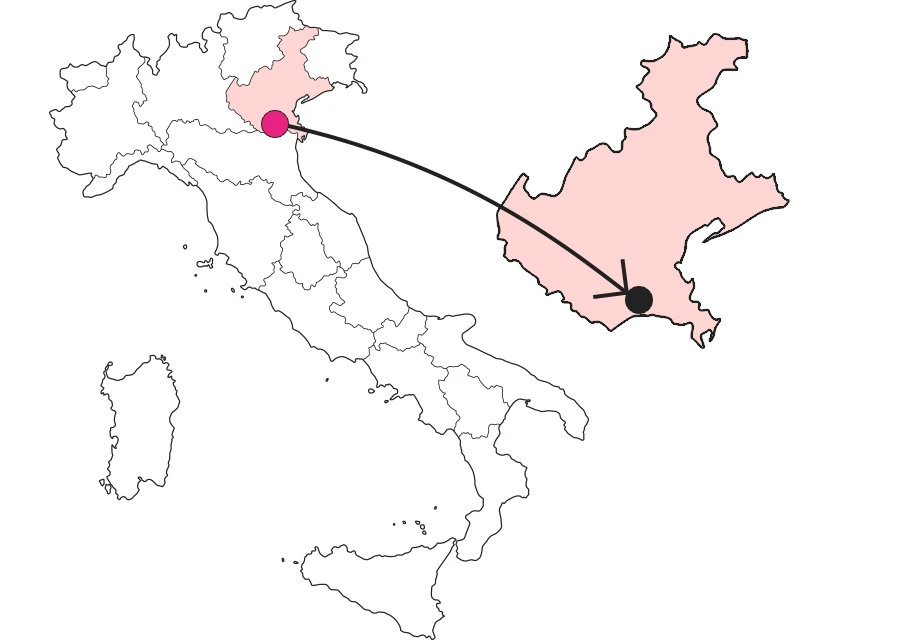







The Porto Caleri Botanical Garden
Walkways cross it from the sea to the lagoon like a bird's eye view

Where

What it is and where it is
The Coastal Botanical Garden of Porto Caleri is a unique reality in the framework of Italian protected areas, partly because already reaching it is in itself a naturalistic experience, along an embankment between river and lagoon, but above all because in its 44 hectares it offers a complete review of those coastal habitats that in the vast majority of our coasts have been erased by the construction of ports or sacrificed to the needs of seaside tourism. The Botanical Garden, one of the jewels in the crown of the Po Delta Park, of which among other things it serves as the Visitor Center, is located at the end of the coastal road that descends from Rosolina Mare to Porto Caleri. It is a sui generis 'garden', anything but cultivated, in the sense that it is nature that reigns supreme, undisturbed by principle. The hand of man, in fact, is mostly seen in the equipped paths, for large stretches elevated, that go from the coastal dunes to the lagoon through the evergreen forest that represents the most complex ecological stage of this environment. With a particularly exciting nod to the beautiful beach, left in its natural state, with large sun-bleached logs, carpets of dried seaweed and flights of sea birds.
Why it's special
The numbers of the Porto Caleri Botanical Garden are unequivocal: hundreds of plant species, some exclusive to the Upper Adriatic, and the same goes for the fauna, mostly winged, resident and migratory. One small wader, however, is the one that has gained the attention of the news in recent times: it is the kentish plover (Charadrius alexandrinus), which has the unfortunate habit of laying its eggs in a simple depression at the foot of the coastal dunes; eggs that are perfectly camouflaged, but nevertheless at the mercy not only of natural predators, gulls, crows and magpies, but also of other beachgoers: inattentive bathers, out-of-control dogs, stray cats, and you name it, so much so that there are fears for its demise. Well, Porto Caleri is precisely one of the last Adriatic beaches where the nesting of this species is protected in a way that bodes well for its future.
Not to be missed
Of the three paths that penetrate the Garden, the most exciting is undoubtedly the one that with a sinuous course-three kilometers in all, much of it elevated-passes from the pine forest to the sea, pausing in the lagoon, where a scenic gazebo on stilts represents an unmissable photographic subject. Given a choice, walk the trail in the late afternoon when the inland water surface lights up with the colors of sunset. And wanting to overdo it, plan the outing starting in May, during the blooming period of the limonium, the marsh seedling that covers the ground with a violet mantle fading into the iridescent green of the lagoon.
A bit of history
Rosolina is the Adriatic municipality that occupies the coastal strip between the Adige and the Po di Levante rivers. The main town is on the Strada Romea, with all the hustle and bustle that comes with it nowadays, but you only have to get away from it to enter the more authentic atmosphere of the sort of last frontier that is the Po Delta. Going back not far-we are talking about the 1950s-the only settlement on the coast was Caleri, an outpost frequented only by sailors and hunters. Along the shoreline, an endless dune beach, then pine forest and a lagoon with a mosaic of fishing valleys. The first tourist settlement dates back to 1963, and from there it grew to today's Rosolina Mare - 300 residents and 150,000 seasonal tourists - while still managing, all things considered, to safeguard the surrounding environment, with a particular point of pride for the creation, in 1990, of the Coastal Botanical Garden.
Curiosities
Among the more than two hundred plant species surveyed in the Botanical Garden, the palm of curiosity undoubtedly belongs to the sea eryngium (Eryngium maritimum): triangular, leathery and spiny leaves, waxy on the surface, gray-green in color with bluish tones, and amethyst-colored inflorescences, which give rise to hooked fruits destined to be dispersed by anyone who has the chance to brush against them, hence the popular name calcatrèppola. Add to this the fact that it is one of the few plants to withstand the extreme conditions of the beach - salt, heat, wind, aridity - deployed on the front lines as it is, among the dunes. A plant, in other words, that would not disfigure in a hypothetical Martian flora.
Enter the Map of Italy's Undiscovered Wonders and find treasures where you least expect it... Inspire, Recommend, Share...
Collections
The Map thanks:
In the Community
Enter the Map of Italy's Undiscovered Wonders and find treasures where you least expect it... Inspire, Recommend, Share...
Where

Collections

